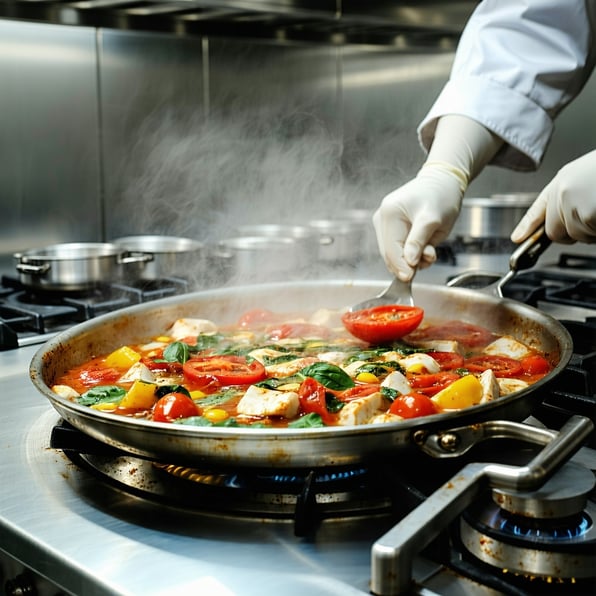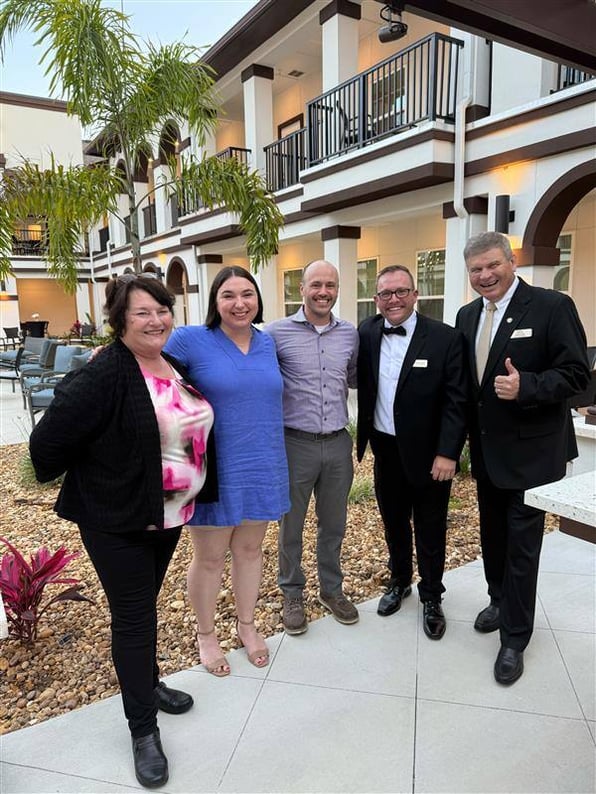3 Technology Trends That Are Revolutionizing Senior Dining Operations

For residents at assisted living (AL), independent living (IL), and skilled nursing communities, mealtimes are one of the most important parts of the day. English author Virginia Woolf wrote, “One cannot think well, love well, sleep well, if one has not dined well.”
Yet if you’re in charge of dining services at a senior living community, you know that helping your residents “dine well” can be a challenge. Consider these scenarios:
- A dining room server at an AL community delivers a batch of handwritten meal tickets to the kitchen—but the chef can’t read her handwriting. Either he clarifies with the server what she wrote down (which wastes time), or he does his best to decipher what’s on the tickets (which could result in an incorrect meal).
- At the end of each month, a food service manager at an IL community tabulates how many meals each resident purchased over the past four weeks. But her process for doing so is inefficient. Not only does she have to save dozens of handwritten meal tickets each month, but she also has to count the number of tickets manually—which takes time and could result in errors.
- A nursing assistant at a skilled nursing community explains to a resident what’s available for lunch and asks her what she would like. But the resident has hearing loss, so she doesn’t know what her options are.
Is there anything that can solve these problems?
There is, and the answer likely won’t surprise you—technology. Each year, more products are hitting the market that are designed for senior living communities, including cloud-based software applications and Point of Sale (POS) systems, the latter of which have been used by restaurants for decades.
While we can’t predict what products and innovations will stick (and what ones won’t) in the years ahead, we can identify some trends in technology that are here to stay—all of which will revolutionize the way your senior living community serves up its meals.
- Going paperless
It may seem silly to make this point, as most of us make several electronic transactions on a daily basis. But many AL, IL, and skilled nursing communities still rely on paper-based systems for their dining operations, whether it’s:
- Keeping track of residents’ food preferences and nutrition information,
- Setting rotating menu schedules, or
- Completing billing at the end of the month.
Thankfully, technology can digitize these and many other processes—saving time and money and increasing accuracy. For example:
- Dining applications exist that allow you to create rotating menu schedules that update automatically. When you need to change a day’s menu for a special event or holiday or because of an unforeseen last-minute change, you can do so with ease.
- POS systems allow you to track residents’ meal charges automatically, eliminating the need to save paper tickets throughout a billing period. When you have to calculate a resident’s dining bill at the end of the month, all you have to do is click a button to get an accurate, complete report.
These changes don’t mean that you’ll eliminate paper completely. Many AL and IL kitchens, for example, still print out order tickets and pair them with completed meals to make the delivery process easy for servers. And you’ll likely still send your residents a printout of their dining bill for the month.
But you’ll have eliminated paper where it can be and begun using technology to make your operations more efficient and accurate.
- Using the cloud
Many meal-ordering systems are no longer software programs housed on a company server. Instead, they’re online.
Not only does this ensure your system will receive frequent feature updates (meaning you won’t have to “patch” any of that expensive software you purchased), but it also allows family members to be involved in a resident’s dining experience more easily and comprehensively. Think about it:
- While in-between flights on a business trip, a resident’s daughter uses her mobile device to select what meal her father (who lives in a memory care community) will have that evening.
- Using his laptop at home, a son adds money to his mother’s meal account at an IL community. The balance is updated immediately. He also can see how many meals she has purchased over a specified time period—which could alert him if she’s not getting enough meals and socializing with her peers.
By housing your dining applications in the cloud, you’re creating a better experience for your residents and their families that will lead to high customer satisfaction.
- Leveraging real-time information
Electronic dining applications and POS systems enable staff to get meal-ordering updates in real time. This helps them complete their jobs more efficiently—and it saves money! Consider:
- A dining room server enters a resident’s meal choice tableside using a tablet or handheld device. That information is sent instantaneously to a printer or screen in the kitchen. Because of this, the chef doesn’t have to worry about deciphering what the server’s handwriting says. Furthermore, the server doesn’t have to bring handwritten meal tickets to the kitchen—enabling her to stay in the dining room and respond to residents’ needs more promptly.
- Cooks in a skilled nursing community can access real-time updates on how many meals have been ordered and in what neighborhoods/units. Instead of having to overestimate how many meals to make—which leads to food waste—they can create just what the community needs, and no more. Greater accuracy saves money.
Paperless operations, account access wherever the internet is available, up-to-date information at your fingertips—three trends in technology that are sure to impact dining operations in the years ahead.
Matt Stenerson is Chief Technology Officer and Co-Founder of eMenuCHOICE®, an award-winning web-based software tool developed by Lyngblomsten that breaks down the communication barriers for resident meal ordering while enabling person-centered choices, maximizing accuracy, and streamlining kitchen meal prep operations for senior living communities.



